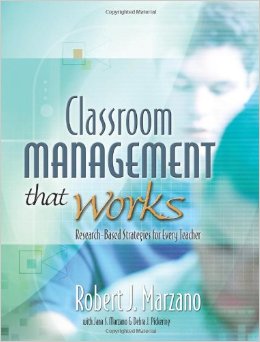Last week, Classcraft co-founder Shawn Young presented a special webinar on effective classroom management techniques and how they led to Classcraft’s successful game design. Watch the full webinar recording here.
In this four-part series, we’ll look at the four most effective classroom management strategies as identified in the book Classroom Management That Works: Research-Based Strategies for Every Teacher (a meta study of over 300 research studies into classroom management) and how Classcraft uses them to create meaningful changes and positive culture in the classroom.
Strategy: Teacher-Student Relationships
 Teacher-student relationships are a fuzzy area. What is too friendly or too authoritative, and what isn’t? Variables like the teacher’s personality and the age gap between teacher and students can make this strategy difficult.
Teacher-student relationships are a fuzzy area. What is too friendly or too authoritative, and what isn’t? Variables like the teacher’s personality and the age gap between teacher and students can make this strategy difficult.
According to Classroom Management That Works, there are two dimensions to the relationship between teachers and students: “One dimension is dominance versus submission; the other is cooperation versus opposition.”
Projecting the right amount of dominance in the classroom is crucial. Being extremely dominant makes kids feel like they don’t have a relationship, but the other end of the spectrum encourages disrespect.
“You have to have a strong measure of authority,” Young said, “and the way you do that is by having strong purpose. So being very clear about where you’re going and where kids are supposed to be following, either from a curricular standpoint or a classroom management standpoint.” In this way, teachers are guiding students toward certain goals and communicating that they’re there to help.
Cooperation is another important element to consider. It goes a long way to building positive classroom relationships when teachers show empathy and let students know that while they’re setting the purpose, everyone (including the teacher) is working together to get there.
Students want to feel heard and listened to, and they want to know that the teacher is looking out for their well-being.
Too much of either is also bad. If it’s clear that your concern for their needs outweighs your purpose, or vice versa, it can disrupt the balance of the classroom. This requires teachers to confront and contract.
In other words, teachers should act upon behavior quickly and in a real way but at the same time bend the rules in special contexts. According to Classroom Management That Works, this is highly preferable to students. When students feel that you’re listening to their needs but knows the teacher expects them to behave better next time (and holds them to that), they’ll be more likely to comply in the future.
How this works in Classcraft
Dominance: As the “Gamemaster,” teachers are in charge of Classcraft. By stepping into this role, teachers create a condition where they have inherent authority because they’re managing the game.
What’s more, teachers will be accurately guiding students toward certain behaviors.
Cooperation: By deciding to use Classcraft, teachers are showing that they’re listening to their students’ needs for fun and engagement. They become more in tune with their students by involving them directly in the classroom management.
This rewires the social dynamics of the class because the teacher and students are now playing the game together, which works toward building more positive relationships between them.
Confront/contract: Playing Classcraft means directing attention to disciplinary problems in a flexible way. For example, teachers may be removing HP for negative behaviors, but teammates have the chance to use their game powers to help each other out and minimize the effects.
This gives kids a sense of agency and power over negotiating behavior interventions and awards them more control over their own path in the classroom.
Stay tuned tomorrow for the final entry in our four-part series on “What Classroom Management Techniques Work Best.” See Part 1 and Part 2.
You can also learn how to create your own successful classroom management plan in five easy steps.
Photo credit: Monkey Business Images / Shutterstock.com


